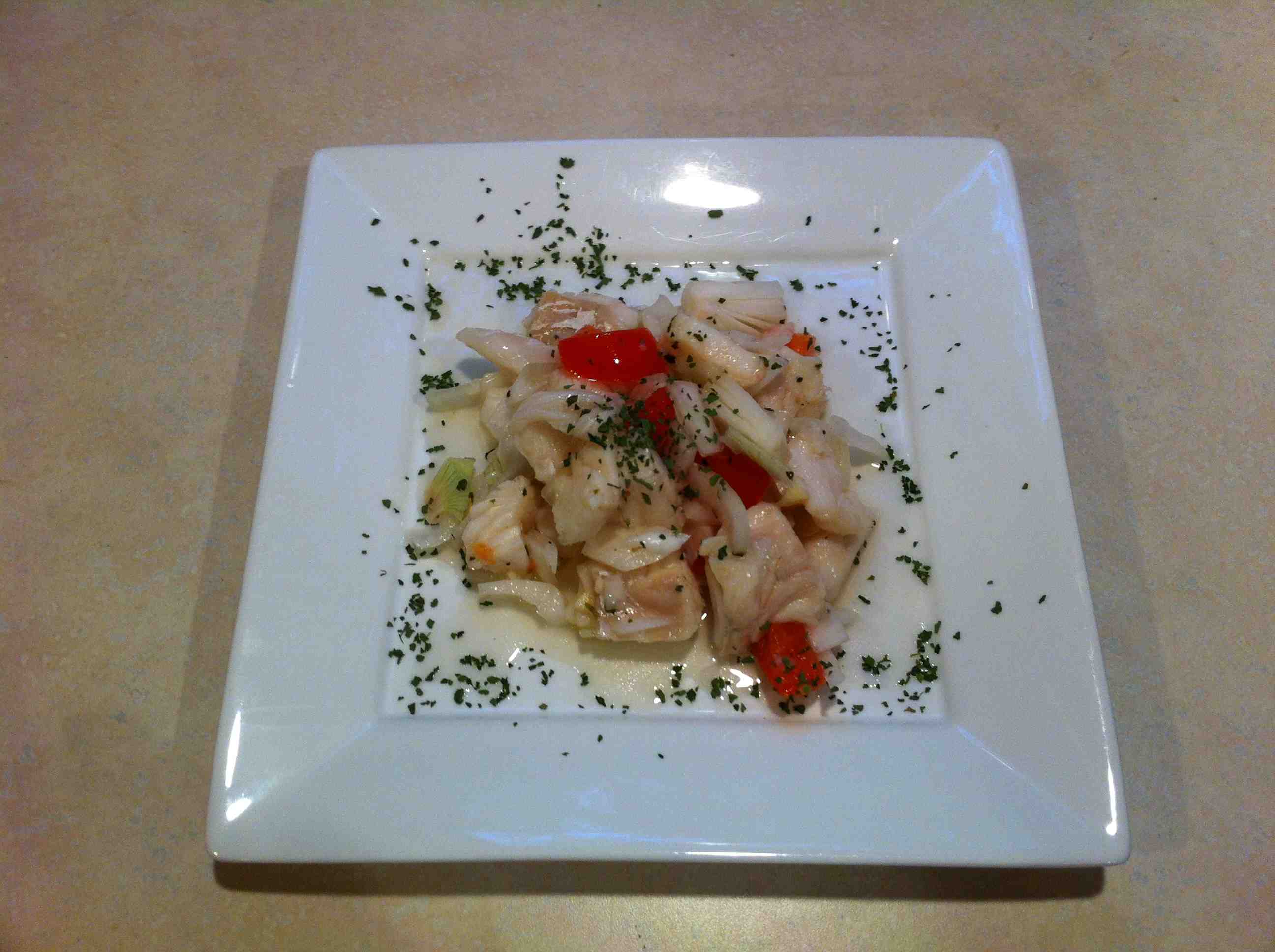Gonzalo Erdozain asks, what to do when tired of writing a research paper? Cook, and then blog about it.
The cooking in this case is a misnomer – I prepared ceviche. It has different iterations with varied ingredients, but as a food safety nerd, the one constant element of concern (which makes it ceviche) is raw fish “cooked” with lime juice. Eating this dish a few years ago would have been easy, but with three years of food safety research and two years of vet school under my belt, I just know a bit too much about the risks involved. Yet, here I am, preparing it.
Besides the well-known possibility of a bacterial contamination, like Salmonella (as in a recent sushi outbreak), Listeria (of special concern for pregnant women and immunocompromised  individuals), or Vibrio, I happened to recall a parasitology lecture about Diphyllobothrium latum, a.k.a. broad tapeworm (although not a true tapeworm, we will call it that to spare you the details as to what qualifies as a true tapeworm).
individuals), or Vibrio, I happened to recall a parasitology lecture about Diphyllobothrium latum, a.k.a. broad tapeworm (although not a true tapeworm, we will call it that to spare you the details as to what qualifies as a true tapeworm).
D. latum is becoming more common in developed countries due to the increasing popularity of dishes based around raw fish (e.g., ceviche, sushi, sashimi). Doing some research, I found a paper where the acidity of the lime lowered the Vibrio numbers down to a safe level, while another study found lime acidity to have no effect on Salmonella. Listeria seems to be less resistant to acidic condition when kept at 7º C, and since ceviche is refrigerated for two hours while the fish “cooks,” the risk of Listeria could be reduced (I would still never feed this to a pregnant woman or immunocompromised individual).
Regarding the tapeworm, I didn’t find anything specific about lime juice, but the FDA makes the following recommendation:
“Parasites (in the larval stage) consumed in uncooked, or undercooked, unfrozen seafood can present a human health hazard. Among parasites, the nematodes or roundworms (Anisakis spp., Pseudoterranova spp., Eustrongylides spp. and Gnathostoma spp.), cestodes or tapeworms (Diphyllobothrium spp.) and trematodes or flukes (Chlonorchis sinensis, Opisthorchis spp., Heterophyes spp., Metagonimus spp., Nanophyetes salminicola and Paragonimus spp.) are of most concern in seafood. Freezing and storing at -4°F (-20°C) or below for 7 days (total time), or freezing at -31°F (-35°C) or below until solid and storing at -31°F (-35°C) or below for 15 hours, or freezing at -31°F (-35°C) or below until solid and storing at -4°F (-20°C) or below for 24 hours is sufficient to kill parasites. FDA’s Food Code recommends these freezing conditions to retailers who provide fish intended for raw consumption.”
I used cod, and found no evidence of it ever being involved in a tapeworm infection; but it could be possible. And if I end up with a tapeworm, I will let you all know. As for my kitchen clean-up, I did the same as when I deal with any raw meat: clean and disinfect all surfaces and stuck all utensils in my dishwasher.
